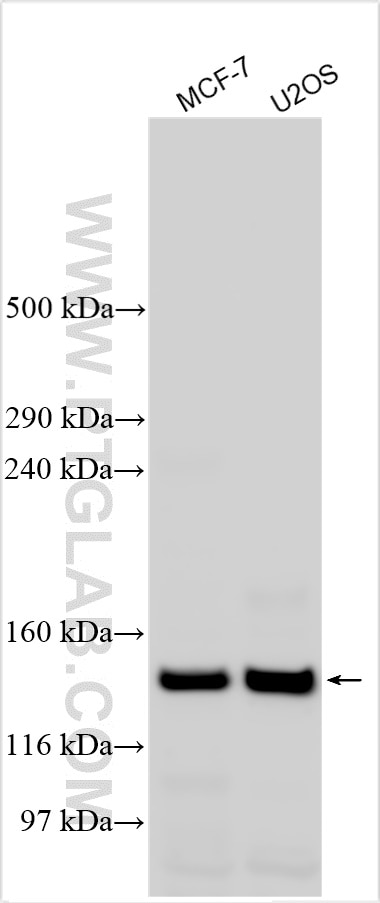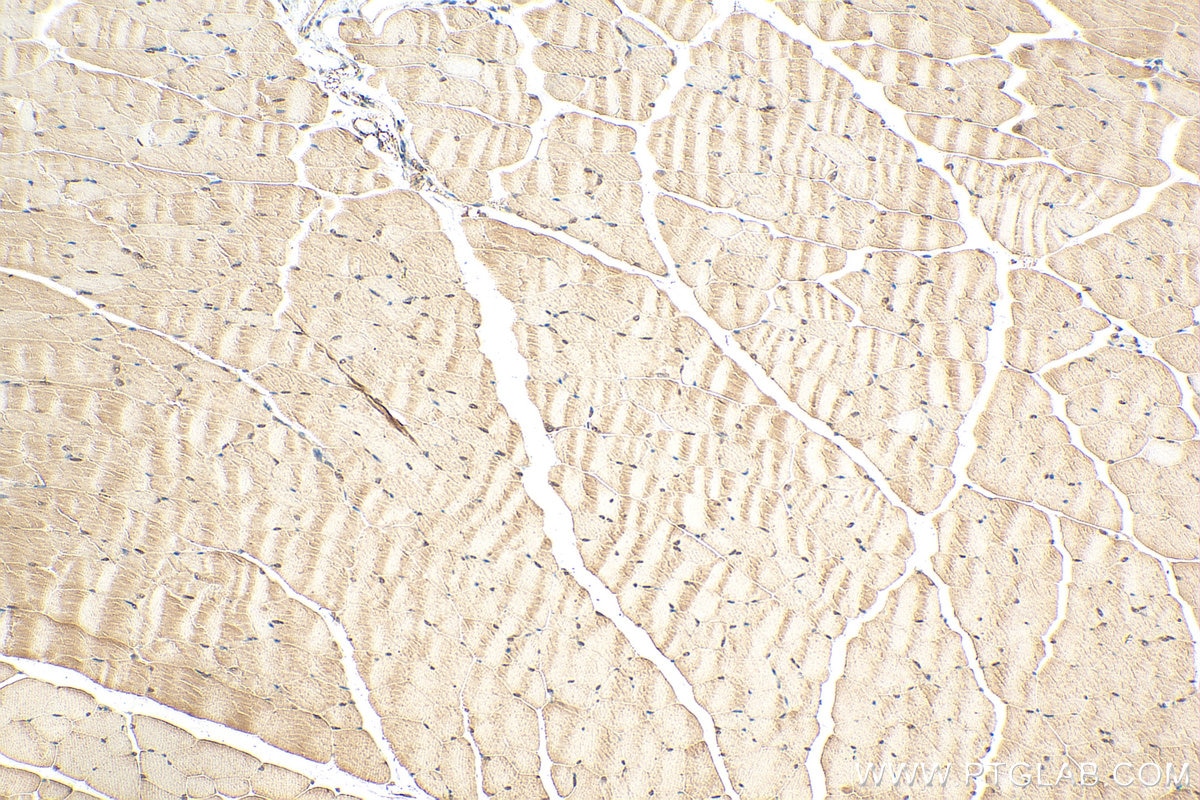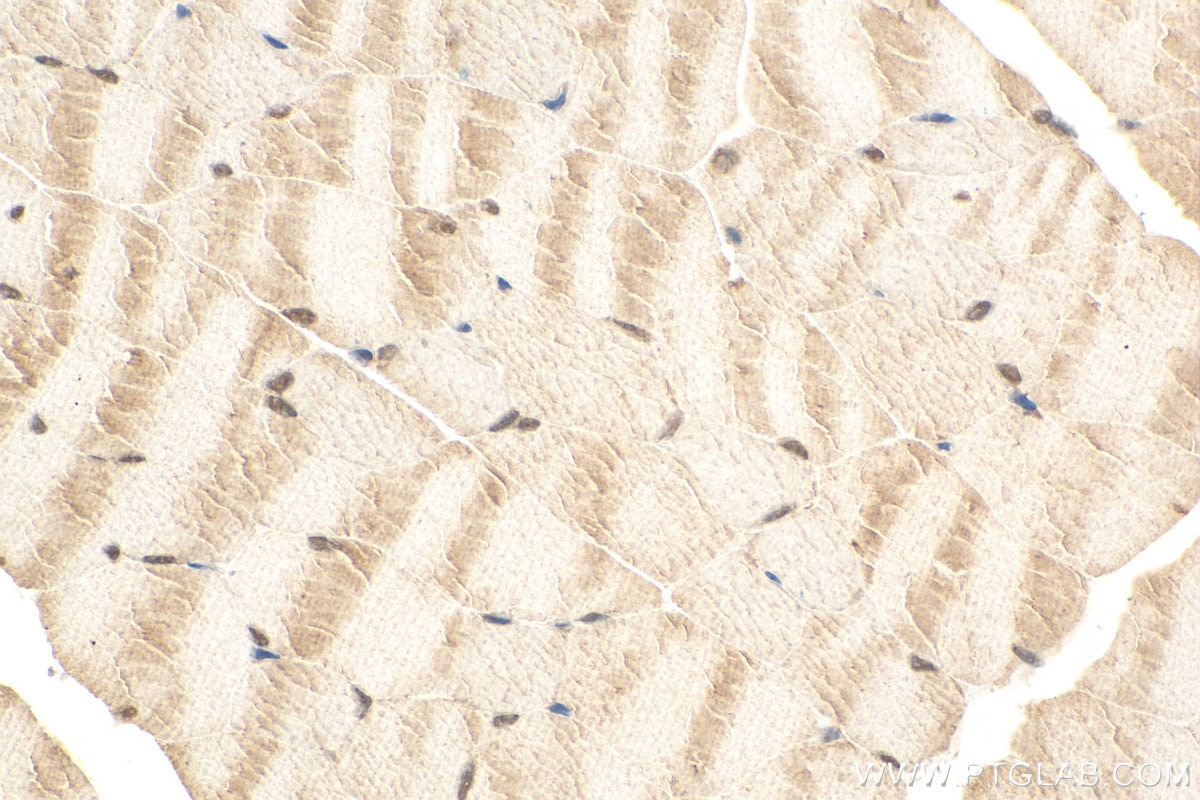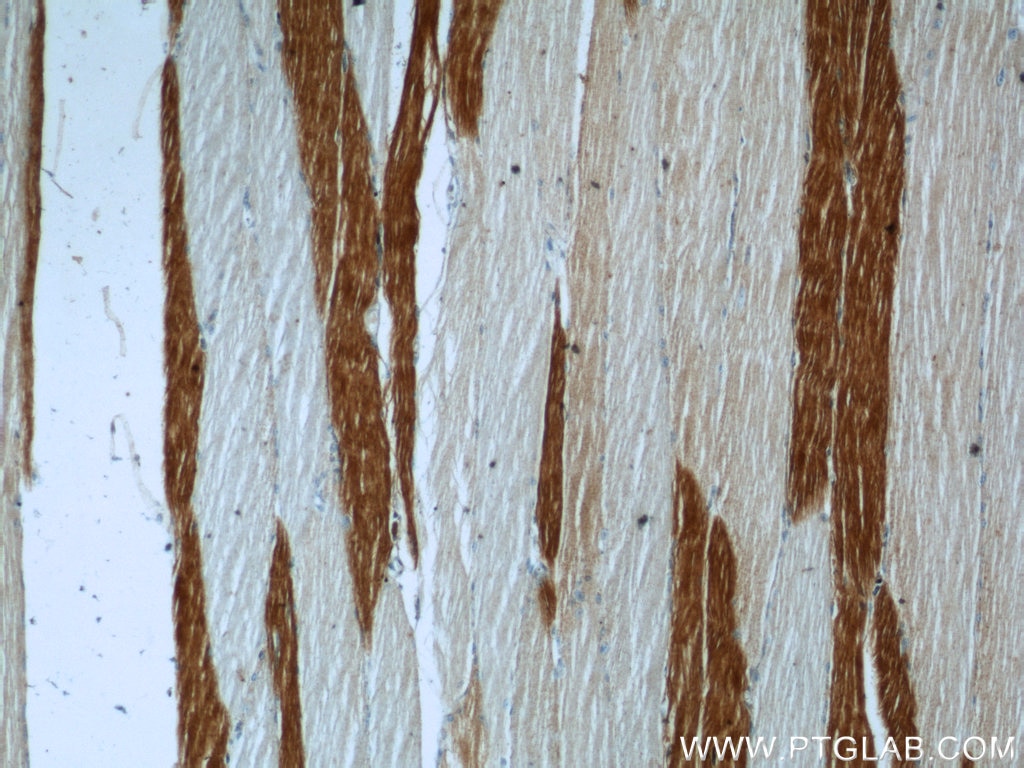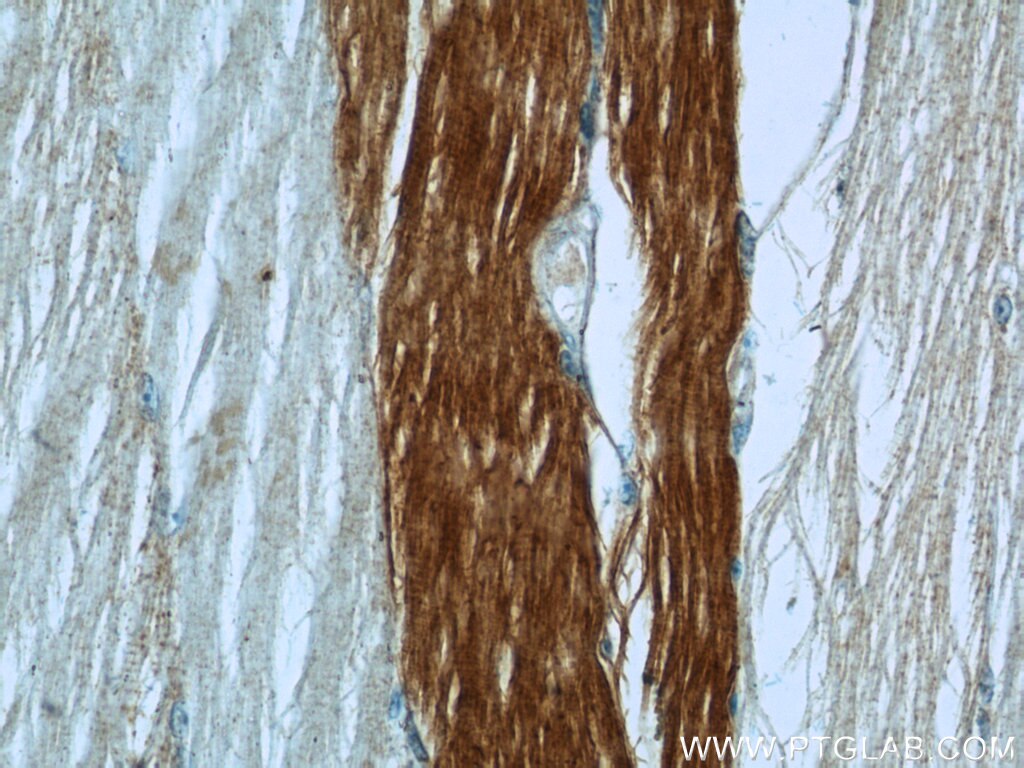Tested Applications
| Positive WB detected in | MCF-7 cells, U2OS cells |
| Positive IHC detected in | mouse skeletal muscle tissue, human skeletal muscle tissue Note: suggested antigen retrieval with TE buffer pH 9.0; (*) Alternatively, antigen retrieval may be performed with citrate buffer pH 6.0 |
Recommended dilution
| Application | Dilution |
|---|---|
| Western Blot (WB) | WB : 1:500-1:3000 |
| Immunohistochemistry (IHC) | IHC : 1:50-1:500 |
| It is recommended that this reagent should be titrated in each testing system to obtain optimal results. | |
| Sample-dependent, Check data in validation data gallery. | |
Published Applications
| KD/KO | See 1 publications below |
| WB | See 1 publications below |
| IHC | See 3 publications below |
| IF | See 1 publications below |
Product Information
24697-1-AP targets MN1 in WB, IHC, IF, ELISA applications and shows reactivity with human samples.
| Tested Reactivity | human |
| Cited Reactivity | human, mouse |
| Host / Isotype | Rabbit / IgG |
| Class | Polyclonal |
| Type | Antibody |
| Immunogen | MN1 fusion protein Ag20344 Predict reactive species |
| Full Name | meningioma (disrupted in balanced translocation) 1 |
| Calculated Molecular Weight | 1320 aa, 136 kDa |
| Observed Molecular Weight | 136 kDa |
| GenBank Accession Number | BC156879 |
| Gene Symbol | MN1 |
| Gene ID (NCBI) | 4330 |
| RRID | AB_2879678 |
| Conjugate | Unconjugated |
| Form | Liquid |
| Purification Method | Antigen affinity purification |
| UNIPROT ID | Q10571 |
| Storage Buffer | PBS with 0.02% sodium azide and 50% glycerol, pH 7.3. |
| Storage Conditions | Store at -20°C. Stable for one year after shipment. Aliquoting is unnecessary for -20oC storage. 20ul sizes contain 0.1% BSA. |
Background Information
MN1 (Transcriptional activator MN1), which is mainly located in nucleus. Highest expression is observed in fetal brain and skeletal muscle, and adult skeletal muscle. MN1 protein can interact with Brg1/Brm related factor (BAF) complex containing Smarca4/Brg1 and stabilize it on chromatin, thus maintaining the expression of hematopoietic progenitor cell-like genes. Under normal physiological conditions, MN1 protein is mainly expressed in granulocyte monocyte progenitor cells (GMP) in hematopoietic system, which plays an important role in the development and function of hematopoietic cells, and it is involved in regulating cell proliferation, differentiation, apoptosis and embryonic development. MN1 protein is related to many diseases, especially in leukemia (PMID: 23049943). MN1 gene rearrangements such as t(12; 22)(p13; Q11) can produce MN1-TEL fusion protein, which combines the transcriptional activation domain of MN1 and the DNA binding domain of TEL(ETV6), and can stably occupy the TEL recognition sequence, hindering the combination of normal transcription regulatory factors, thus leading to leukemia. Overexpression of MN1 gene has also been proved to be one of the signs of poor prognosis in patients with acute myeloid leukemia (AML), and its expression level is high in AML patients with normal karyotype. The molecular weight of MN1 is 136 kDa.
Protocols
| Product Specific Protocols | |
|---|---|
| WB protocol for MN1 antibody 24697-1-AP | Download protocol |
| IHC protocol for MN1 antibody 24697-1-AP | Download protocol |
| Standard Protocols | |
|---|---|
| Click here to view our Standard Protocols |
Publications
| Species | Application | Title |
|---|---|---|
Nat Commun Astroblastomas exhibit radial glia stem cell lineages and differential expression of imprinted and X-inactivation escape genes. | ||
EBioMedicine METTL14-mediated epitranscriptome modification of MN1 mRNA promote tumorigenicity and all-trans-retinoic acid resistance in osteosarcoma.
| ||
Acta Neuropathol MN1 immunohistochemistry is a sensitive diagnostic biomarker for primitive CNS tumors with MN1 fusion |
